What boat to buy – does the perfect one exist?
There is no perfect boat and we are sure that the majority of cruisers and sailors agree. However, there is always the best choice you can make for the mission you plan. Every single boat has pros and cons. It doesn’t matter if it’s a crazy expensive trimaran or 30 ft aged monohull. In order to buy a boat, which has more advantages for you, you need to ask yourself for what purposes and what type of sailing the boat is. And as every boat is different, we, as humans, are different, so what is right and sufficient for us, will not necessarily work in your case.
Despite this, we will try to give you some guidelines and general information, what type of boats are on the market. And, more importantly, we will bring you closer to answering yourself: What boat should I buy? Because choosing the right boat for your sailing plan is essential.
Do you really need to own a boat?
disadvantages of owning a boat
We’re going to start from dissuading you from buying any boat. Old truth is, that there are two happiest days in a sailor’s life: one, when you buy a boat, second – when you sell it. If owning a boat, sailing itself is a very small part of the boating life. Rest is doing maintenance, fixing, planning, servicing, troubleshooting, winterizing etc. You need to think well ahead where to keep the boat while you’re away. In popular holiday destinations, marinas and boatyards are fully booked well in advance and they are expensive. It will always be at the back of your head what’s happening while you’re not there or what’s the weather.
So, if you plan to sail 2 weeks per year and have hassle-free holidays with your family – don’t buy a boat. Go somewhere, charter a boat, have fun – this is how we started and we can help you with as well. Owning a boat has nothing in common with holidays, it’s rather fixing her in beautiful spots.
Advantages of owning a boat
On the other hand, there are definitely many good reasons to own a boat. Freedom of sailing wherever you want, reaching spots which cannot be reached by land or on a charter trip, while having your small home with you it’s a big value. Without a doubt it’s the only solution if you plan to sail full-time. Let’s dig deeper then, what you can choose from.
Bluewater cruiser or production boat – what boat to buy?
In general, we can distinguish two main categories – Bluewater cruisers and lightweight production boats. Personally, we would also add a third one – custom-built one-off boats. Between these categories we have seen a vast ocean of options and subcategories.
Bluewater cruisers
Bluewater cruisers are designed to withstand heavier weather, they have heavier displacement and stronger hull and rig. They often have a skeg rudder and center cockpit. By design they are built to be sturdy ocean cruisers, even the layout is designed to make them livable in heavy weather. But of course, they have cones as well. They are more expensive than production boats. Maintenance and spare parts are also pricey. Market for them is smaller, but they keep the price with time.
Examples of such boats/manufactures are: Hallberg-Rassy, Malo, Najad, Oyster, Amel.
Production boats
Cheaper alternatives are lightweight production boats. By production we mean standardized production methods used by manufacturers. Those boats are amazing for weekend/holiday coastal sailing. They have different design priorities than bluewater cruisers. Their main job is to fit as many people as possible into multiple cabins for a 2 week charter trip in good comfort. Of course, it doesn’t mean they cannot be used as full-time live aboard vessels and cross oceans. Moreover, thanks to their wide availability, many cruisers choose production boats. Talking about its construction, the hull is usually thinner, and they don’t have a skeg. They have open, spacious aft cockpits, which is an advantage while throwing a party at the anchor, but it’s not necessarily safe when you’re fighting a storm in the middle of the Atlantic. Compromises…
Moreover, this space is usually stolen from storage compartments. Bear in mind that the majority of these boats have spent their lives serving in charter companies and often it’s like buying a car from a rental company. And we have all seen how charter boats (and cars) are treated by customers 🙂
Examples of such boats/manufacturers: Beneteau, Jeanneau, Hanse, Bavaria.
Custom-made one-off boats
It’s the third category, which is usually being skipped in many publications, yet an important one. These boats are made according to individual’s projects or ready designs you can buy. Then, they are built in either reputable yards or people’s garages. As a result, you can find a good quality boat suitable for your needs or a vessel built without any knowledge, skills or quality materials. You need to have some knowledge to properly check and decide if such a boat is worth considering. Price range is also big, but this is the category where you find the cheapest project boats needing care and love. If you are looking for your first boat and you don’t have much knowledge and skills, I would not recommend buying one-off boats, it can be a hit and miss game.
Examples of such boats/ ready-to-buy projects: Bruce Roberts, Van der Stadt
Summary – what boat to buy?
There is no perfect boat, but there are good boats for different types of sailing. If you plan to keep the boat in one place, sail when the weather allows and invite tons of friends for holidays, you probably don’t have to invest in a sturdy bluewater cruiser. But, when your sailing dreams are ocean passages and when your budget allows – consider buying one. We sailed long ocean passages on production boats, we know people safely circumnavigating on them. We’ve also seen bluewater cruisers in such deteriorated shape, that they will probably never go to the ocean. Boat design is not the sole criterium of buying a boat, but it’s worth to know the differences. Proper equipment, maintenance, crew’s skills, good planning and safety measures are equally important for safety at sea.
Hull material – what boat to buy?
GRP – Glass Reinforces Plastic sailboats
In this paragraph we will briefly compare three main construction materials used in boats industry nowadays. The material you choose will affect future boat maintenance, it’s strength, but also, your everyday life.
Let’s start with the most popular one – GRP, which stands for Glass Reinforced Plastic, or simply – fiberglass. No doubt, it has many advantages – it’s light, it’s strong and easy to repair even by yourself. It’s available all over the world and the market for GRP boats is huge. And because fiberglass is so widely used, you can expect that its quality will differ between manufacturers and boats. Obviously, fiberglass used in production boats will be thinner than the one used in more reputable bluewater cruisers. Moreover, its strength will depend on its construction (layers) – if it’s a sandwich fiberglass panel, what’s the core (plywood or foam) or if it’s a solid fiberglass.
GRP technology has changed throughout the years. Buying a boat from the 70s, you need to be aware that at that time fiberglass in the boating industry was relatively new. And if the technology is new, you need to give it some time to settle, develop skills and techniques that are satisfactory. In the 80s, even the economic tensions in the world affected the quality. You wouldn’t expect to learn history in order to buy a good boat, would you?
Another problem which you need to have in mind is osmosis, which is basically water penetrating laminate below the gelcoat. What we’ve learned is that some boat manufacturers or models are more prone to it, some are not.
Steel boats
Steel constructions are on the market way longer than fiberglass boats. It’s widely used in commercial shipping vessels and one-off productions. They are sturdy and heavy, so in case of collision your chances are higher than on a GRP boat. You can see many expedition boats made of steel, which is understandable having in mind their strength.
They are easy to work with, you’ll find steel welders in every boatyard. But, the problem is that it’s steel. And steel is corrosion. Moreover, in steel boats, corrosion starts from the inside of the boat, which is very difficult to inspect and monitor. Unless you decide to dismount your upholstery regularly, which I guess is not your plan. Having a steel hull, its age is very important. Unlike GRP boats, steel boats require more and more care when getting older. New steel hull probably won’t cause you any major problems during the first 15 years. Then, after repainting, you have another 5-10 years of peace of mind. But having a 25 years old (or more) steel boat, you’d better become good friends with your welding machine.
Aluminum boats
We love aluminum boats. They have the best features of two previous materials – it’s light as GRP and stronger than steel. Additionally, aluminum corrosion is electrolytic. Because of that aluminum does not corrode in the water (it corrodes because of electrical currents present in the water), but in presence of other materials, acids and alkalines. This type of corrosion is easier to control, less harmful and slower compared to corrosion of steel. To prevent it, you need to insulate every single metal item you attach to your boat (including different aluminum alloys), check if your steel anchor does not touch bare aluminum etc. You also need to remember not to dock your boat next to the steel one in the marina.
Aluminum is hard to work with, there are not too many good aluminum welders and your boat projects will be more challenging than on GRP boat. Painting is also tricky and paints do not adhere to aluminum well. That’s why many people choose to have a distinctive fish scale bare aluminum look, which we personally love.
For a very long time aluminum hull was our main criteria when looking for a boat until we ended up buying our Malo. We were aware of disadvantages mentioned above but still it’s qualities overweighted those. Why did we end up buying a GRP boat then? The reason was that the market for aluminum boats is way smaller than GRP’s. Using aluminum in pleasure boats has a shorter history and still not too many manufacturers do that. First aluminum yachts were built in the 1980s and only in the 2000s they became a bit more popular. Yet still very few manufacturers build them in higher numbers due to price and construction complexity.
As a result, it was difficult for us to find one, in the size we wanted and fulfilling other important requirements we had. There were too many compromises just to have an aluminum boat, so we decided to buy sturdy GRP construction.
Popular aluminum manufacturers: Alubat, Allures, Garcia.
summary – materials in boating industry
We will not go through all available materials in the boating industry. There are also carbon fiber boats, used rather for racing, but we are sure that if you want to buy one, you know the reasons. We also didn’t mention wood, we can just advice: don’t go that way. Unless you are wooden boats passionate, ready to polish and varnish her instead of drinking sundowners.
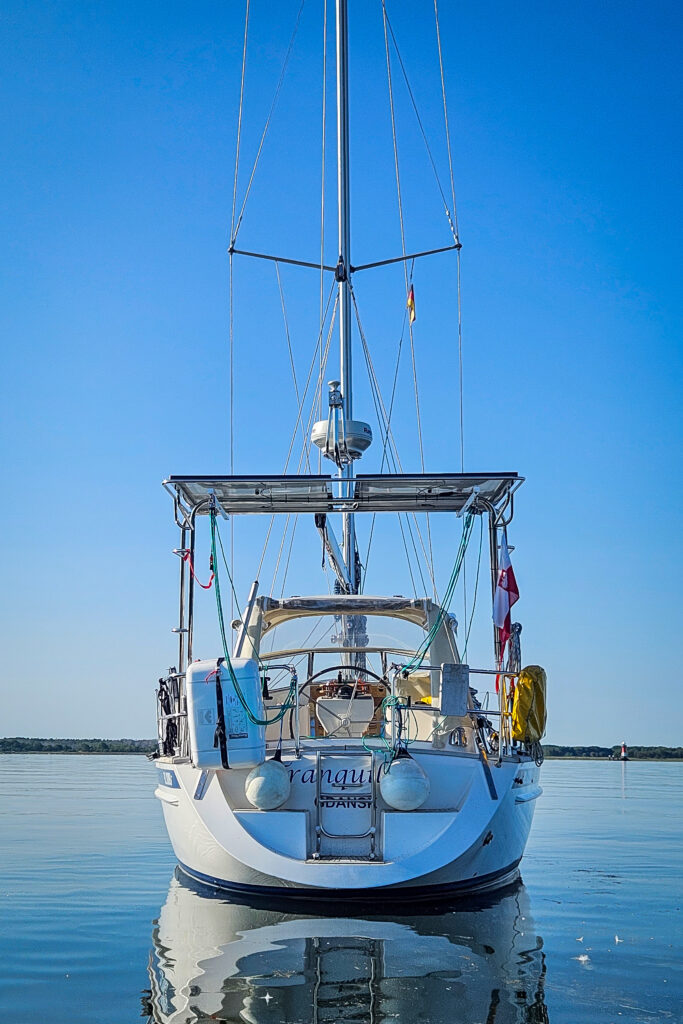 Our Malo 39 – GRP boat
Our Malo 39 – GRP boat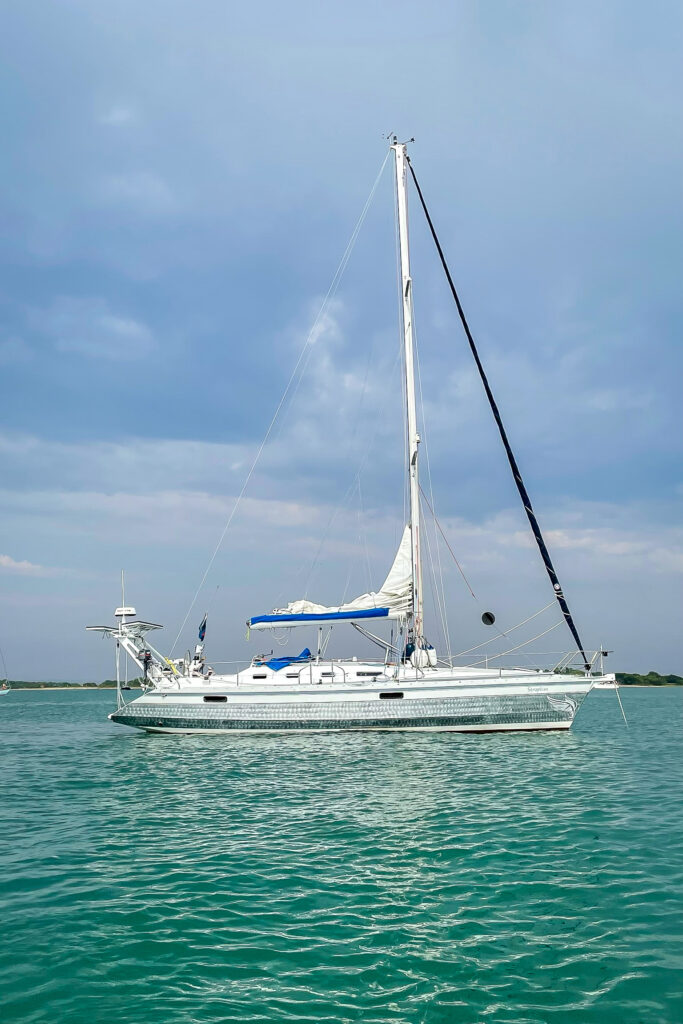 Seraphim – aluminum yacht, photo by Richard Wasilikowski
Seraphim – aluminum yacht, photo by Richard Wasilikowski Fryderyk Chopin – an example of steel vessel
Fryderyk Chopin – an example of steel vessel
Monohull or catamaran? What boat to buy?
It’s a very personal choice. You’ll meet both catamaran and monohull fans. We knew from the beginning that we wanted mono.
Disadvantages of catamarans
Purchase and maintenance costs for catamaran are way higher. Some systems are doubled, so you need to be prepared to pay as much as twice the price for spare parts and materials. Everyday costs are also higher, many marinas charge twice the price compared to similar length mono. We’ve also known that we don’t need that much space for two people and generating extra costs for space we don’t need would be silly.
Another aspect is the cat’s poor sailing capabilities while going upwind. Planning to sail in all-weather conditions and higher latitudes made our decision simple.
Considering catamaran, you need to be aware that most of them are production boats. Sturdy ocean cruisers catamarans are not widely available on the market, however for the last few years we can see it’s developing.
Advantages of catamarans
On the other hand, catamarans have many advantages. They are amazing liveaboards, especially if you sail with family and kids. They have a huge living space mentioned before and the truth is, that you spend most of your sailing life in the marina or at the anchor rather than sailing upwind. So you need to choose what is more important for you.
To sum up, you need to make your own decision about what would serve you better, how important living space is for you, what type of sailing you plan, with how many people and if your purchase and maintenance budget is prepared to keep the cat.
New or used? What boat to buy?
We will probably surprise you, but not only money matters. Of course, that’s the main factor in deciding what boat to buy, but there are also other aspects to consider, even if you can afford a brand new yacht.
waiting time
Pandemic and economic slowdown caused the supply chain to break down. Even now, years after, it’s still not as it was before the pandemic. This resulted in huge delays in boat’s production which were not easy to catch up with. On top of that, demand in the boat industry went up, as more people started working remotely and bought all kinds of mobile homes – boats, RVs etc. In recent years, waiting time for a new boat could be as long as 4 years. We know cases of people buying slots in a queue without a specified delivery day. This led to huge demand in the second hand market, as potential new boats’ buyers shifted there. Crazy times.
Now it has started to improve, but still you can’t get a new boat right away, even if you have money in your pocket. Also, in our humble opinion, I wouldn’t go for a boat manufactured during these crazy pandemic and post-pandemic years. In many industries lack of components and parts led to use lower quality substitutes to fulfill production deadlines. And you don’t want to have lower quality than you paid for, right?
Advantages of buying a new sailboat
However, if you decide to go for a new boat, there are plenty of opportunities. Usually you’re able to choose between different layouts and equipment versions. Some manufacturers allow completely customized interior designs, while others have ready projects which you need to choose from. Doing everything your way from the beginning will save your time and workload in the future. And obviously, the moment you need to think about changing or upgrading boat components and systems is delayed in time. But don’t be surprised – new boats also break and they need to pass through all childhood diseases. But you will not be wasting days trying to figure out what did the previous owner have in mind doing this or that. It’s being said that new is always better.
Generally, we do agree. But personally, having a limited budget, I would still buy a used but sturdy and reputable boat rather than a new production one.
how to find a second hand yacht?
There are many ways to find your dream boat, spreading from the most popular website yachworld.com to wandering in the marinas and checking adverts. From our experience, the best gems could be find on local websites and directly from the reliable dealers we work with.
Size and layout – what boat to buy
Read carefully, because now we’re going to write the most important advice in this whole article.
DO NOT OVERSIZE YOUR BOAT. We are in the minority of people who bought a smaller boat than initially planned. That was the best decision we could make. At the beginning we were looking for 45 ft monohull, then we went down with the size to around 42 ft and now we are happy owners of 39 ft Malo.
We will try to give a few reasons not to buy a bigger boat than you really need.
Maintenance costs
All costs including maintenance, spare parts, consumables, go up with every single foot. You are going to use more paint when repainting the bottom, you’ll have to buy more steel lines when replacing rigging, bigger sails and so on. It all costs more.
Sailing costs
In your everyday life you’ll pay more every time you’re in the marina or you plan to store your boat.
Let me give you some examples:
To sail in Greece, you need to pay TEPAI cruising tax. Up to 12 meters of LOA (Length Over All), it’s 33€ per month. Above that length it’s 8€ per meter. So, assuming you have a 13 m boat (just one meter longer), you’re going to pay 103€ instead of 33€! It’s a huge difference, isn’t it? And that’s just one example from our European grounds. On top of that, you will spend a few bugs more in marinas and it all adds up.
Writing this, I am moored in the marina in Germany where they charge 1,5€ per meter. Let’s imagine I have a 1 meter longer boat and I stay in similar marinas every day. 1,5€ x 365 = 547,5€. Almost 550€ extra per year for just one meter. Is it worth it?
Handling and maneuvering a bigger boat
The bigger the boat, the more difficult handling and maneuvering is. It’s an important consideration, especially sailing with a short or inexperienced crew. Forces acting on sails, lines and a boat will be higher, maneuvering in tiny marinas trickier.
More budget margins
Most of us have limited budgets. Buying a smaller boat and leaving yourself some room for financing upgrades, new equipment, new electronics or unexpected expenses will pay off with more peace of mind. Every boat owner would confirm that cruising and maintenance costs are always higher than expected. Don’t make your budget tight by buying unnecessarily big boat.
Don’t get us wrong – we don’t say that all big boats are bad. What we are trying to say is that an unnecessarily big boat can be a troublemaker. But the fact is, bigger boats are faster, so they will reduce your time spent on a passage. They are also heavier, which makes them behave better and more stable in heavier weather conditions.
Size vs layout
What we’ve learnt looking for our boat is that the bigger size does not always mean more room, storage space or more spacious cockpit. We’ve seen the same size boats, which were very different in regards of living space. This difference is called layout. You can easily compare it to buying an apartment. Sometimes rooms are laid out so well that you can have everything you need in a tiny studio. It works the same with the boats.
If you decide to buy an ex-charter yacht, you must prepare to have many berths, 2-3 heads, but low storage space. Owner’s versions will offer you maximum 2-3 double cabins, with plenty of storage, sometimes even a separate technical room or a walk-in shower. If you’re looking for a boat for you, your family and occasional guests, owner’s versions are what you need to look for. Ex-charter boats are your target if you plan to use your yacht commercially.
We must admit that our boat is almost perfect in regards of layout. In 12 meters, we have a spacious saloon, big kitchen, two big double cabins (I am laughing that I didn’t have that wide bed at home). Moreover, we have a big head, separate room for a shower, not to mention two huge cockpit lockers. But it took us almost 2 years of viewings and many more years of research to find something that works for us. We haven’t seen such a great layout in any 42-45 ft comparable boats we’ve been considering.
What do you expect from a boat’s living space is very personal. Not every single person needs a walk-in shower or big guest cabin. Some would prefer to have armchairs with a coffee table instead of a sofa. Some would sacrifice a navigation table to have an extra head or fridge. There are plenty of options, you just need to know and look for your perfect one.
Below, you can see the example of different layouts of the same boat – Beneteau Oceanis 48. First one, with 5 cabins is dedicated for charter purposes while second one is an owner’s version.
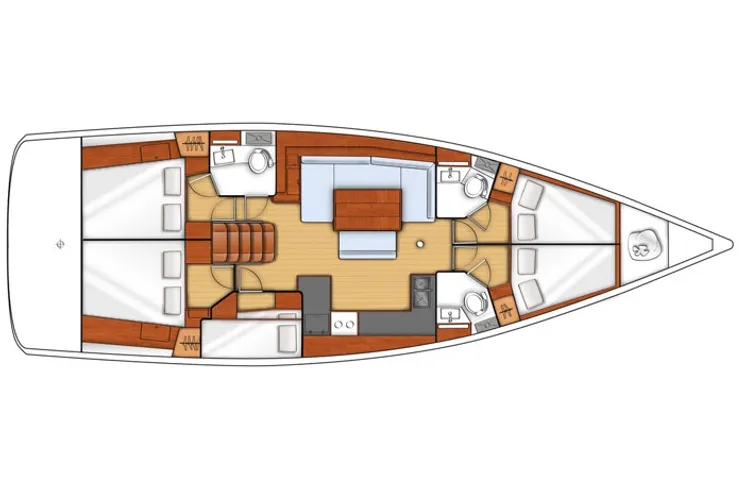 Oceanis 48 – 5 cabins version
Oceanis 48 – 5 cabins version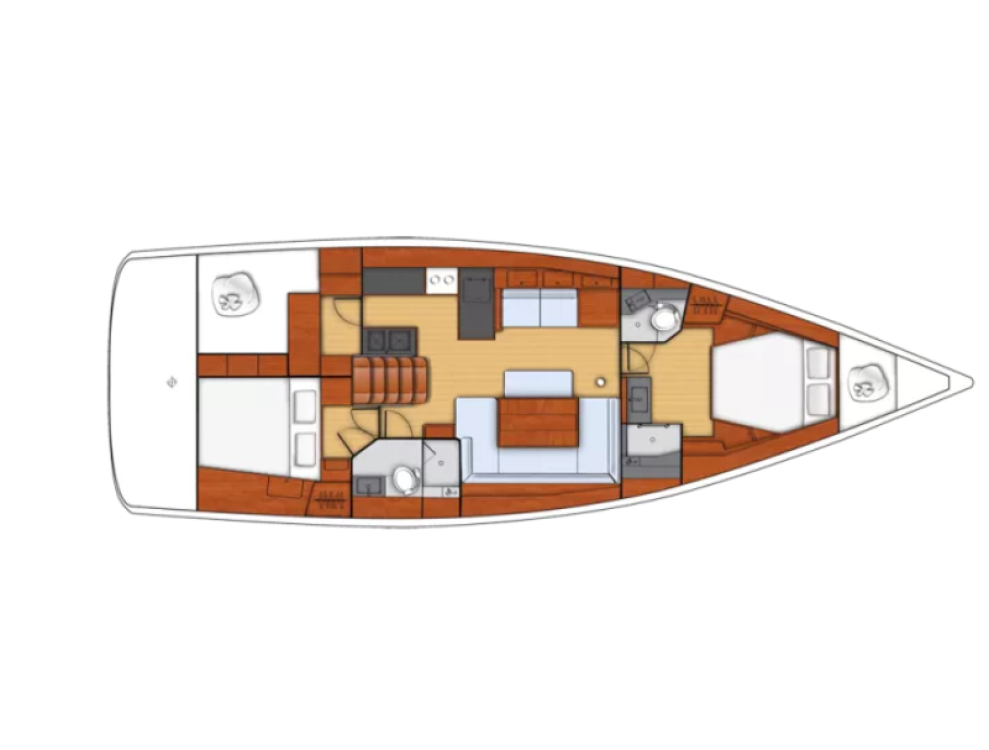 Oceanis 48 – owner’s version
Oceanis 48 – owner’s version
What boat to buy – summary
To sum everything up, we would like to point, that this is a general outline of types of designs available on the market. All information is based on our deep research, very long and extensive boat hunt, personal experience and opinions as well as our mistakes and most common failures made by fellow sailors. Many mentioned features interpenetrate between categories and there is no winner in this race. Or, maybe it is – the boat you can afford, the boat you love, you care about and that gives you great memories.
As we mentioned above, people have sailed the world on small production boats of all types. Sailing community is full of people who bought neglected hulls and made them seaworthy. It’s all possible. Sometimes it requires more work, more dedication, more time or conservative planning, but this is passion and motivation what matters, not digits on your bank account.
On the other hand, we’ve seen amazing designs in such a neglected state, that has proven to us that you can run down badly the best and the most expensive boat.
Difference is you and your dream.
There is no perfect boat but there are good boats for different tasks. Although every boat is a compromise, years of research, viewings and surveys have taught us how to make these compromises work. Of course, it’s not possible to describe here every single design feature/aspect of your potential boat. Decisions about buying a boat must be researched well, discussed and dug deep into. Remember, if you’re buying a boat, you are buying a dream, so you often see the world through rose-tinted glasses. So isn’t it sensible to have a wingman on your side who is not emotionally involved and can help you with the process? If you have any questions regarding that or you’re looking for a helping hand, don’t hesitate to contact us for advice to learn from our mistakes instead of yours.
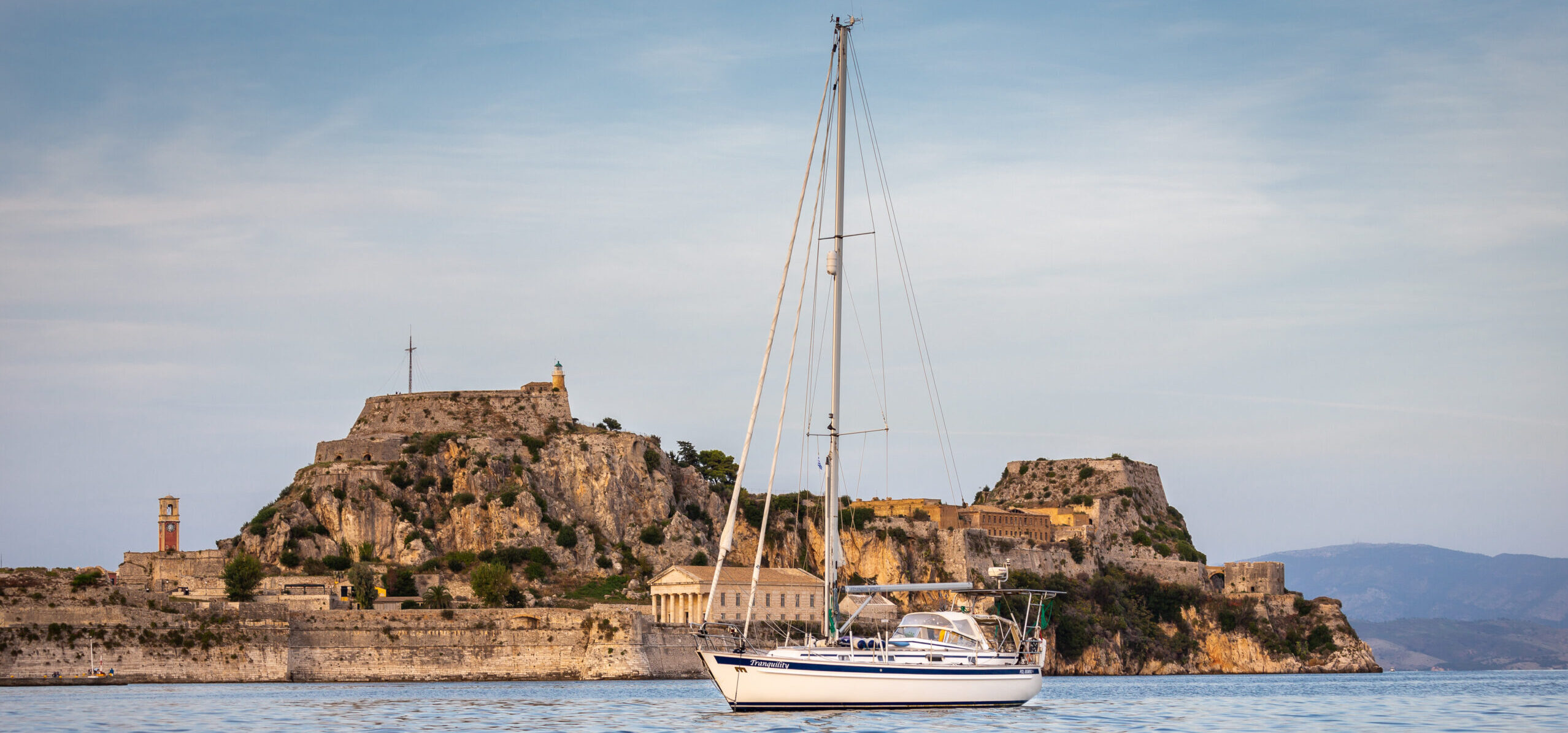
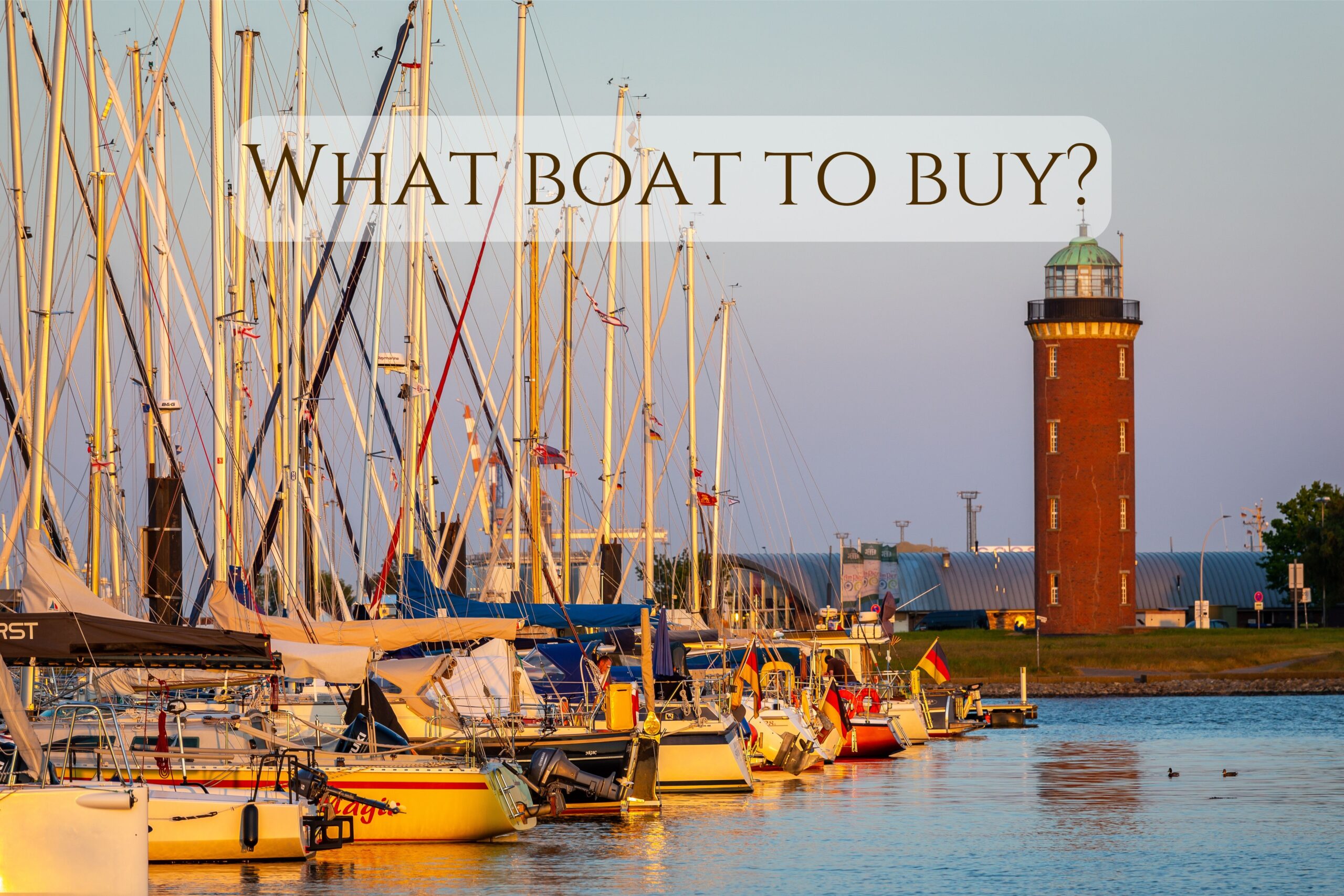




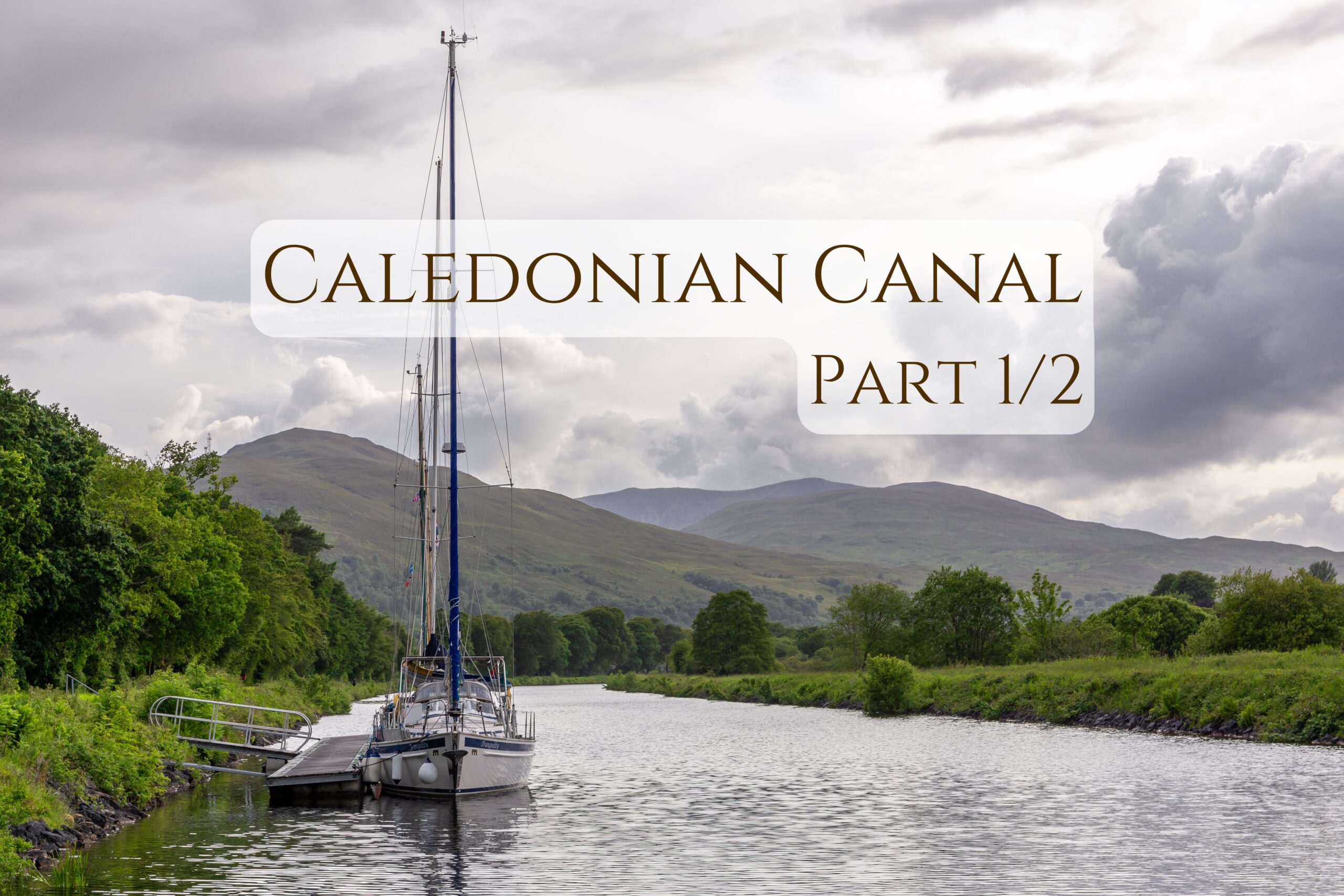
No responses yet